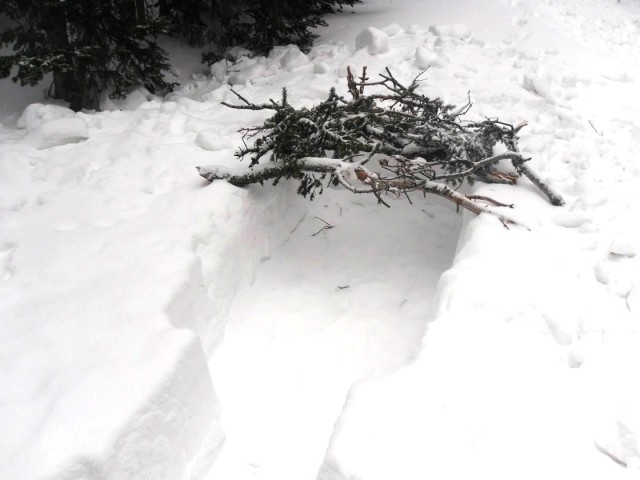
The backcountry punishes mistakes fiercely, especially in the winter. But should you find yourself stranded in the woods during the winter, there are ways to ensure you survive the night. Ford Church of the Cottonwood Institute, a nonprofit focused on outdoor education, teaches a winter outdoor survival class at REI in Boulder each year. He offers the following advice should you find yourself in a winter survival situation, just remember: S.T.O.P.
Stop what you’re doing and take some time to calm down.
Think about what you’re doing and what resources you have.
Observe your surroundings. Plan on either building a shelter or getting out of the area. If you need to overnight, your goal is to keep your body temperature high enough to survive the night.
“We talk about survival as a game of 98.6 degrees,” Church says.
You need to build a shelter, he says. Those giant snow caves you see on the TV shows? Church recommends against them.
“One of the reasons I don’t like snow caves is because they can collapse,” Church says. “It depends on having a reliable snow bank or space to dig into. On the east side of the Continental Divide, we just have a really crappy snowpack. You can find snowdrifts to dig into. But the one thing is that you have a tremendous amount of snow on top of you, and if it collapses, especially if you’re by yourself, you’re kind of screwed.”
Church recommends either digging out a tree well shelter or digging a snow trench. The route you choose depends on the gear you have with you. If all you have are the skis you came down the mountain with, the slightly less labor-intensive tree well shelter would be ideal. But if you have a shovel, you could probably dig a snow trench in one or two hours, Church says.
A tree well shelter is pretty self-explanatory: You take advantage of the natural open space that forms around a snowy tree during the winter and dig it out into a shelter where you can spend the night.
“There’s kind of that natural depression around trees, and if you can kind of dig that area out, get into it and cover it with sticks and then snow on top of that, you can actually make a temporary shelter,” Church says.
Collect tree boughs and branches to use as insulation at the bottom of the tree well. The more separation you have between you and the snow, the less heat you’ll lose though conduction to the snow. Gather at least six to 12 inches, Church says.
Your other option is a snow trench. You might be able to build one with a snowboard, snowshoe or ski, Church notes, but this one’s definitely easier if you have a shovel. Look for a clear opening and dig a trench, about three feet deep, that’s just wider than your shoulders. In one end of the trench, dig an entrance that you’ll crawl into when ready. Again, take some pine boughs and other sorts of branches and pile them onto the bottom of the trench. You don’t want the bottom of your shelter to suck the heat out of you.
Make a roof with sticks and branches, and cover it with a tarp or an emergency blanket if you have one. Pile up snow around the outside of the trench, using the snow to pin down the branches and/or tarp you are using as a roof.
“You wall off the entrance completely with blocks of snow … and when you’re ready to burrow into your shelter for the night, you cut a small hole into the wall you’ve just created just barely wide enough to wiggle through and you get into your shelter,” Church says.
Your gear will, in part, determine your chances of survival.
“A survival kit could be really small or really big,” Church says. “I describe it as an insurance policy — you get to determine how much insurance you want to carry.”
Church’s kit that he takes with him is about the size of a mini-football, he says. He brings an emergency blanket, 50 feet of parachute cord (for lashing branches into a roof), three methods of making fire (a lighter, matches and a striker) a collapsible metal cup and an extra power bar or candy bar. Being able to signal the rescue team is incredibly important, he says, and he carries a whistle for that purpose. The emergency blanket is reflective, too, and can also be used as a signal.
When you build a shelter, build it slowly, he says.
“The big thing with making shelters,” Church says, “if you sweat you die. Really, as you’re digging out your shelter you can get really snowy, and your body heat will start to melt that and as the sun goes down and it drops 40 degrees, you’re in a different situation.”
Church will be teaching survival classes on Wednesday, Nov. 28, at the REI Denver store, and on Monday, Dec. 10, at the REI Boulder Store. For more details, visit www.cottonwoodinstitute.org.
Respond: [email protected]














